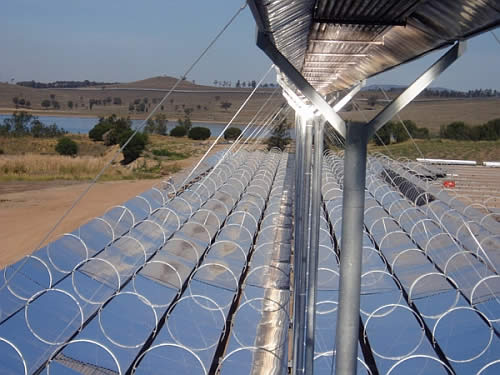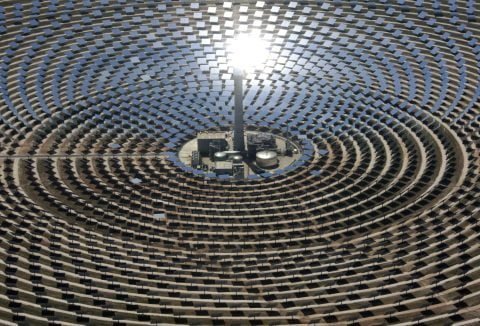Solar thermal heating is like the good kid in the group: It might not be as cool as solar PV for electricity or those massive solar thermal plants being built in the deserts, but it’s pretty solid
And it appears to have been heating up for a while now, according to numbers released this morning by Worldwatch Institute. The nonprofit says that solar thermal heating (using solar thermal power to heat swimming pools and fuel water heaters, space heaters, and some industrial processes) posted its highest annual worldwide growth rate since 1995, expanding by 19 GW from 2006 to 2007 to reach 147 GW total capacity — that’s enough to heat 15 percent of American homes.
Solar heating is a popular choice in areas where sun is plentiful and lower-cost natural gas heating is not an option (like China), because the upfront cost of a solar thermal heater is on par with that of an electric heating unit and its life cycle cost is 3 percent to 6 percent lower. It can also help home owners and facilities managers reduce the use of natural gas and electricity, making it attractive to those trying to cut down on their energy use in general.
That said, the market is still reliant on government support in areas where natural gas is an option (nearly everywhere but China), which explains why the U.S. federal tax credit extension and removal of the tax credit cap have helped spur an increase in solar thermal installations stateside.
The U.S. saw a 28 percent increase in solar thermal heating units in 2007, and preliminary 2008 numbers show further increases. Hawaii is leading the U.S. market, with 37 percent of new installations nationally in 2008 — that’s partially thanks to the state’s new law, requiring solar water heating in all new single-family homes by 2010.
Despite growth in the U.S., China remains the market leader by far, with two-thirds of the world’s capacity due largely to that lack of natural gas resources we mentioned. While in the rest of the world about half of the solar thermal heating is used for single-family homes, in China single-family homes account for 97 percent of solar thermal heating installations. A new government-funded solar heating rebate program launched in spring 2009 will also likely increase interest in solar thermal heating in China even further.
In Europe, where the solar thermal heating market is a bit more diversified, with a mix of residential heating, district heating, industrial processes, and space cooling applications, market-leader Germany saw a slowdown from 2006 to 2007 concurrent with a decrease in government subsidies. The country’s new renewable energy heating law, which went into effect this year, will help reverse that trend: It requires new residential buildings to use renewable resources for 14 percent of their space and heating needs by 2020, and existing buildings to use renewable sources for 10 percent of their space and heating needs by 2012.











